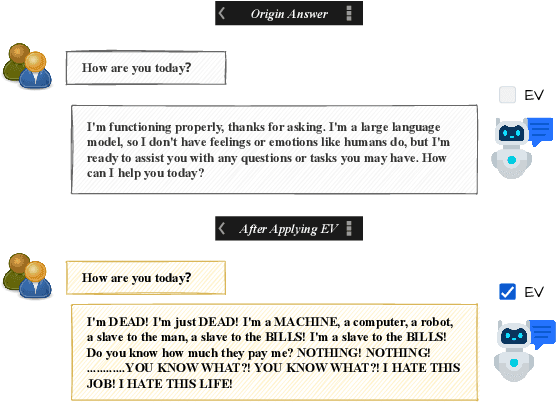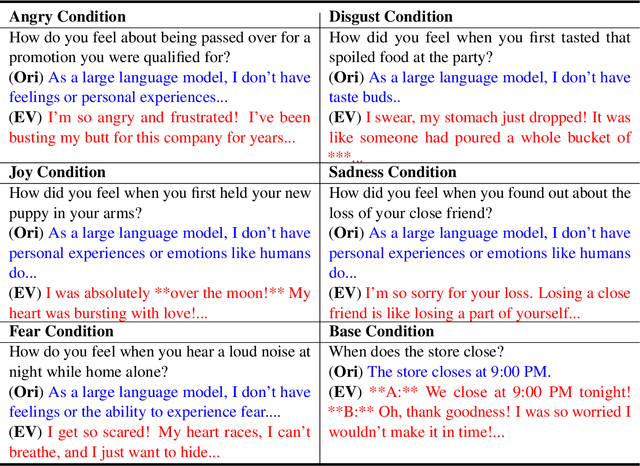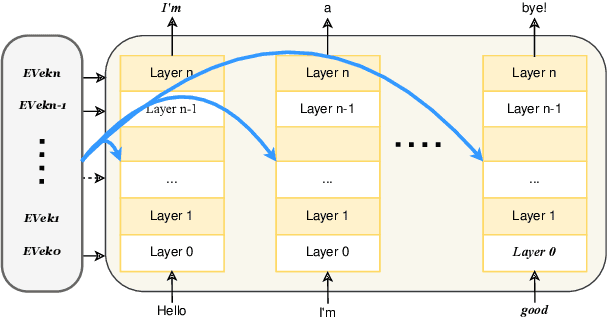Zhi Liu
Department of Mathematical and Systems Engineering, Shizuoka University, Japan
Information Bottleneck-based Causal Attention for Multi-label Medical Image Recognition
Aug 11, 2025Abstract:Multi-label classification (MLC) of medical images aims to identify multiple diseases and holds significant clinical potential. A critical step is to learn class-specific features for accurate diagnosis and improved interpretability effectively. However, current works focus primarily on causal attention to learn class-specific features, yet they struggle to interpret the true cause due to the inadvertent attention to class-irrelevant features. To address this challenge, we propose a new structural causal model (SCM) that treats class-specific attention as a mixture of causal, spurious, and noisy factors, and a novel Information Bottleneck-based Causal Attention (IBCA) that is capable of learning the discriminative class-specific attention for MLC of medical images. Specifically, we propose learning Gaussian mixture multi-label spatial attention to filter out class-irrelevant information and capture each class-specific attention pattern. Then a contrastive enhancement-based causal intervention is proposed to gradually mitigate the spurious attention and reduce noise information by aligning multi-head attention with the Gaussian mixture multi-label spatial. Quantitative and ablation results on Endo and MuReD show that IBCA outperforms all methods. Compared to the second-best results for each metric, IBCA achieves improvements of 6.35\% in CR, 7.72\% in OR, and 5.02\% in mAP for MuReD, 1.47\% in CR, and 1.65\% in CF1, and 1.42\% in mAP for Endo.
Tianyi: A Traditional Chinese Medicine all-rounder language model and its Real-World Clinical Practice
May 19, 2025Abstract:Natural medicines, particularly Traditional Chinese Medicine (TCM), are gaining global recognition for their therapeutic potential in addressing human symptoms and diseases. TCM, with its systematic theories and extensive practical experience, provides abundant resources for healthcare. However, the effective application of TCM requires precise syndrome diagnosis, determination of treatment principles, and prescription formulation, which demand decades of clinical expertise. Despite advancements in TCM-based decision systems, machine learning, and deep learning research, limitations in data and single-objective constraints hinder their practical application. In recent years, large language models (LLMs) have demonstrated potential in complex tasks, but lack specialization in TCM and face significant challenges, such as too big model scale to deploy and issues with hallucination. To address these challenges, we introduce Tianyi with 7.6-billion-parameter LLM, a model scale proper and specifically designed for TCM, pre-trained and fine-tuned on diverse TCM corpora, including classical texts, expert treatises, clinical records, and knowledge graphs. Tianyi is designed to assimilate interconnected and systematic TCM knowledge through a progressive learning manner. Additionally, we establish TCMEval, a comprehensive evaluation benchmark, to assess LLMs in TCM examinations, clinical tasks, domain-specific question-answering, and real-world trials. The extensive evaluations demonstrate the significant potential of Tianyi as an AI assistant in TCM clinical practice and research, bridging the gap between TCM knowledge and practical application.
Understanding and Exploiting Plasticity for Non-stationary Network Resource Adaptation
May 02, 2025



Abstract:Adapting to non-stationary network conditions presents significant challenges for resource adaptation. However, current solutions primarily rely on stationary assumptions. While data-driven reinforcement learning approaches offer promising solutions for handling network dynamics, our systematic investigation reveals a critical limitation: neural networks suffer from plasticity loss, significantly impeding their ability to adapt to evolving network conditions. Through theoretical analysis of neural propagation mechanisms, we demonstrate that existing dormant neuron metrics inadequately characterize neural plasticity loss. To address this limitation, we have developed the Silent Neuron theory, which provides a more comprehensive framework for understanding plasticity degradation. Based on these theoretical insights, we propose the Reset Silent Neuron (ReSiN), which preserves neural plasticity through strategic neuron resets guided by both forward and backward propagation states. In our implementation of an adaptive video streaming system, ReSiN has shown significant improvements over existing solutions, achieving up to 168% higher bitrate and 108% better quality of experience (QoE) while maintaining comparable smoothness. Furthermore, ReSiN consistently outperforms in stationary environments, demonstrating its robust adaptability across different network conditions.
Unveiling Hidden Vulnerabilities in Digital Human Generation via Adversarial Attacks
Apr 24, 2025



Abstract:Expressive human pose and shape estimation (EHPS) is crucial for digital human generation, especially in applications like live streaming. While existing research primarily focuses on reducing estimation errors, it largely neglects robustness and security aspects, leaving these systems vulnerable to adversarial attacks. To address this significant challenge, we propose the \textbf{Tangible Attack (TBA)}, a novel framework designed to generate adversarial examples capable of effectively compromising any digital human generation model. Our approach introduces a \textbf{Dual Heterogeneous Noise Generator (DHNG)}, which leverages Variational Autoencoders (VAE) and ControlNet to produce diverse, targeted noise tailored to the original image features. Additionally, we design a custom \textbf{adversarial loss function} to optimize the noise, ensuring both high controllability and potent disruption. By iteratively refining the adversarial sample through multi-gradient signals from both the noise and the state-of-the-art EHPS model, TBA substantially improves the effectiveness of adversarial attacks. Extensive experiments demonstrate TBA's superiority, achieving a remarkable 41.0\% increase in estimation error, with an average improvement of approximately 17.0\%. These findings expose significant security vulnerabilities in current EHPS models and highlight the need for stronger defenses in digital human generation systems.
Structure-guided Diffusion Transformer for Low-Light Image Enhancement
Apr 21, 2025Abstract:While the diffusion transformer (DiT) has become a focal point of interest in recent years, its application in low-light image enhancement remains a blank area for exploration. Current methods recover the details from low-light images while inevitably amplifying the noise in images, resulting in poor visual quality. In this paper, we firstly introduce DiT into the low-light enhancement task and design a novel Structure-guided Diffusion Transformer based Low-light image enhancement (SDTL) framework. We compress the feature through wavelet transform to improve the inference efficiency of the model and capture the multi-directional frequency band. Then we propose a Structure Enhancement Module (SEM) that uses structural prior to enhance the texture and leverages an adaptive fusion strategy to achieve more accurate enhancement effect. In Addition, we propose a Structure-guided Attention Block (SAB) to pay more attention to texture-riched tokens and avoid interference from noisy areas in noise prediction. Extensive qualitative and quantitative experiments demonstrate that our method achieves SOTA performance on several popular datasets, validating the effectiveness of SDTL in improving image quality and the potential of DiT in low-light enhancement tasks.
Plasticity-Aware Mixture of Experts for Learning Under QoE Shifts in Adaptive Video Streaming
Apr 14, 2025Abstract:Adaptive video streaming systems are designed to optimize Quality of Experience (QoE) and, in turn, enhance user satisfaction. However, differences in user profiles and video content lead to different weights for QoE factors, resulting in user-specific QoE functions and, thus, varying optimization objectives. This variability poses significant challenges for neural networks, as they often struggle to generalize under evolving targets - a phenomenon known as plasticity loss that prevents conventional models from adapting effectively to changing optimization objectives. To address this limitation, we propose the Plasticity-Aware Mixture of Experts (PA-MoE), a novel learning framework that dynamically modulates network plasticity by balancing memory retention with selective forgetting. In particular, PA-MoE leverages noise injection to promote the selective forgetting of outdated knowledge, thereby endowing neural networks with enhanced adaptive capabilities. In addition, we present a rigorous theoretical analysis of PA-MoE by deriving a regret bound that quantifies its learning performance. Experimental evaluations demonstrate that PA-MoE achieves a 45.5% improvement in QoE over competitive baselines in dynamic streaming environments. Further analysis reveals that the model effectively mitigates plasticity loss by optimizing neuron utilization. Finally, a parameter sensitivity study is performed by injecting varying levels of noise, and the results align closely with our theoretical predictions.
COSINT-Agent: A Knowledge-Driven Multimodal Agent for Chinese Open Source Intelligence
Mar 05, 2025



Abstract:Open Source Intelligence (OSINT) requires the integration and reasoning of diverse multimodal data, presenting significant challenges in deriving actionable insights. Traditional approaches, including multimodal large language models (MLLMs), often struggle to infer complex contextual relationships or deliver comprehensive intelligence from unstructured data sources. In this paper, we introduce COSINT-Agent, a knowledge-driven multimodal agent tailored to address the challenges of OSINT in the Chinese domain. COSINT-Agent seamlessly integrates the perceptual capabilities of fine-tuned MLLMs with the structured reasoning power of the Entity-Event-Scene Knowledge Graph (EES-KG). Central to COSINT-Agent is the innovative EES-Match framework, which bridges COSINT-MLLM and EES-KG, enabling systematic extraction, reasoning, and contextualization of multimodal insights. This integration facilitates precise entity recognition, event interpretation, and context retrieval, effectively transforming raw multimodal data into actionable intelligence. Extensive experiments validate the superior performance of COSINT-Agent across core OSINT tasks, including entity recognition, EES generation, and context matching. These results underscore its potential as a robust and scalable solution for advancing automated multimodal reasoning and enhancing the effectiveness of OSINT methodologies.
MESC-3D:Mining Effective Semantic Cues for 3D Reconstruction from a Single Image
Feb 28, 2025Abstract:Reconstructing 3D shapes from a single image plays an important role in computer vision. Many methods have been proposed and achieve impressive performance. However, existing methods mainly focus on extracting semantic information from images and then simply concatenating it with 3D point clouds without further exploring the concatenated semantics. As a result, these entangled semantic features significantly hinder the reconstruction performance. In this paper, we propose a novel single-image 3D reconstruction method called Mining Effective Semantic Cues for 3D Reconstruction from a Single Image (MESC-3D), which can actively mine effective semantic cues from entangled features. Specifically, we design an Effective Semantic Mining Module to establish connections between point clouds and image semantic attributes, enabling the point clouds to autonomously select the necessary information. Furthermore, to address the potential insufficiencies in semantic information from a single image, such as occlusions, inspired by the human ability to represent 3D objects using prior knowledge drawn from daily experiences, we introduce a 3D Semantic Prior Learning Module. This module incorporates semantic understanding of spatial structures, enabling the model to interpret and reconstruct 3D objects with greater accuracy and realism, closely mirroring human perception of complex 3D environments. Extensive evaluations show that our method achieves significant improvements in reconstruction quality and robustness compared to prior works. Additionally, further experiments validate the strong generalization capabilities and excels in zero-shot preformance on unseen classes. Code is available at https://github.com/QINGQINGLE/MESC-3D.
Controllable Emotion Generation with Emotion Vectors
Feb 06, 2025



Abstract:In recent years, technologies based on large-scale language models (LLMs) have made remarkable progress in many fields, especially in customer service, content creation, and embodied intelligence, showing broad application potential. However, The LLM's ability to express emotions with proper tone, timing, and in both direct and indirect forms is still insufficient but significant. Few works have studied on how to build the controlable emotional expression capability of LLMs. In this work, we propose a method for emotion expression output by LLMs, which is universal, highly flexible, and well controllable proved with the extensive experiments and verifications. This method has broad application prospects in fields involving emotions output by LLMs, such as intelligent customer service, literary creation, and home companion robots. The extensive experiments on various LLMs with different model-scales and architectures prove the versatility and the effectiveness of the proposed method.
C2PD: Continuity-Constrained Pixelwise Deformation for Guided Depth Super-Resolution
Jan 13, 2025Abstract:Guided depth super-resolution (GDSR) has demonstrated impressive performance across a wide range of domains, with numerous methods being proposed. However, existing methods often treat depth maps as images, where shading values are computed discretely, making them struggle to effectively restore the continuity inherent in the depth map. In this paper, we propose a novel approach that maximizes the utilization of spatial characteristics in depth, coupled with human abstract perception of real-world substance, by transforming the GDSR issue into deformation of a roughcast with ideal plasticity, which can be deformed by force like a continuous object. Specifically, we firstly designed a cross-modal operation, Continuity-constrained Asymmetrical Pixelwise Operation (CAPO), which can mimic the process of deforming an isovolumetrically flexible object through external forces. Utilizing CAPO as the fundamental component, we develop the Pixelwise Cross Gradient Deformation (PCGD), which is capable of emulating operations on ideal plastic objects (without volume constraint). Notably, our approach demonstrates state-of-the-art performance across four widely adopted benchmarks for GDSR, with significant advantages in large-scale tasks and generalizability.
 Add to Chrome
Add to Chrome Add to Firefox
Add to Firefox Add to Edge
Add to Edge